Hor II
De Wikipedia, la enciclopedia libre
Suadyekara Hori, Hori, u Hor II, fue un faraón de la dinastía XIII de Egipto, que gobernó ca. 1647 a. C.[1]
Sólo se conoce porque su nombre, Suadyekara Hori, está inscrito en un fragmento del Canon Real de Turín, en el registro VII, 7, indicando que reinó cinco años... y ocho días.
Este soberano sólo gobernó en una pequeña zona del Alto Egipto, siendo contemporáneo de los reyes de las dinastías XIV, XV y XVI.
Titulatura [editar]
| Titulatura | Jeroglífico | Transliteración (transcripción) - traducción - (procedencia) |
| Nombre de Nesu-Bity |
| s u3ḏ k3 rˁ ḥr i (Suadyekara Hori) El que hace resurgir el espíritu (Ka) de Ra, Hori (Canon Real de Turín nº 7,7) |
| Nombre de Nesut-Bity: |
| s u3ḏ k3 rˁ (Suadyekara) El que hace resurgir el espíritu (Ka) de Ra (Canon Real de Turín nº 7,7) |
| Nombre de Sa-Ra: |
| ḥr i (Hori) Hori (Canon Real de Turín nº 7,7) |
Referencias [editar]
- Notas
- ↑ Franke.
- Referencias digitales
- http://www.narmer.pl/dyn/13en.htm (en inglés)
| Predecesor: Ined | Faraón Dinastía XIII | Sucesor: Sebekhotep VII |
En otros idiomas

Cargado el 5 de noviembre, 2009
Galería de Hans Ollermann
Nebamun
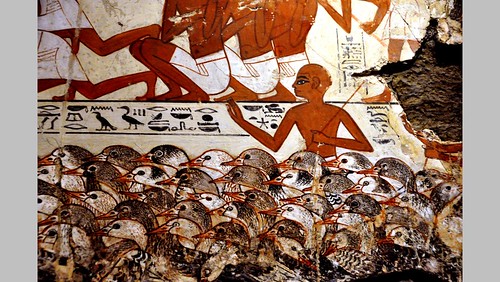
Image 11
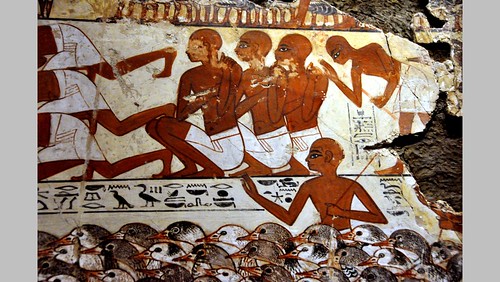
Image 10
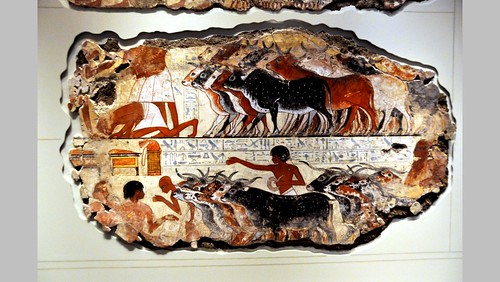
Image 9
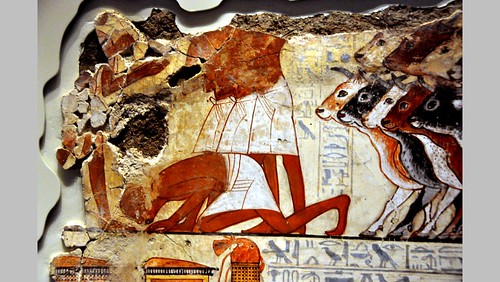
Image 8
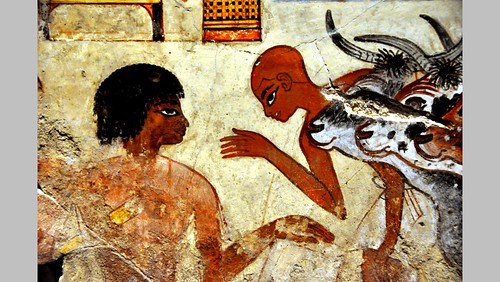
Image 7
Beware ! The Egyptian Museum in Cairo has decided to ban camera's . Not so the good old British Museum, where visitors receive a warm welcome by enjoying the freedom of taking pictures. Here you see some pictures that I recently made of the Nebamon exposition in the British Museum, London.
Nebamun was an Egyptian "scribe and counter of grain" during the New Kingdom. His tomb in Thebes, the location of which is now lost, featured the famous Pond in a Garden false fresco painting.
Nebamun's name is translated as "My Lord is Amun" and he is thought to have lived c. 1500 bc. The paintings were hacked from the tomb wall and purchased by a British collector who in turn sold them to the British Museum in 1821. The collector died in poverty without ever revealing the source location of the paintings. The depictions are highly symbolic and thematically related to a joyful afterlife.
In 2009 the British Museum opened up a new gallery dedicated to the display of the restored eleven wall fragments from Nebamun's tomb, described as one of the Museum's greatest treasures. (Source: Wikipedia EncyclopediA)
See also my list of best and worst museums in the world:
www.flickr.com/photos/menesje/4059308291/
And here you find my list of best and worst museums in Holland:
www.flickr.com/photos/menesje/4059604700/
Nebamun was an Egyptian "scribe and counter of grain" during the New Kingdom. His tomb in Thebes, the location of which is now lost, featured the famous Pond in a Garden false fresco painting.
Nebamun's name is translated as "My Lord is Amun" and he is thought to have lived c. 1500 bc. The paintings were hacked from the tomb wall and purchased by a British collector who in turn sold them to the British Museum in 1821. The collector died in poverty without ever revealing the source location of the paintings. The depictions are highly symbolic and thematically related to a joyful afterlife.
In 2009 the British Museum opened up a new gallery dedicated to the display of the restored eleven wall fragments from Nebamun's tomb, described as one of the Museum's greatest treasures. (Source: Wikipedia EncyclopediA)
See also my list of best and worst museums in the world:
www.flickr.com/photos/menesje/4059308291/
And here you find my list of best and worst museums in Holland:
www.flickr.com/photos/menesje/4059604700/















No hay comentarios:
Publicar un comentario